
 The role of social media in Iran’s Green Movement (2009- 2012)
The role of social media in Iran’s Green Movement (2009- 2012)
Abstract
As a reaction to the result of the 2009 presidential election in Iran, dissatisfied voters who believed the election was hijacked formed the Green Movement. The Green Movement continues to be a political force in Iran and has transformed into a national will for fundamental change in the authoritarian government’s structure. 1 Due to its cultural and social foundations, the movement has crossed social boundaries and revealed new means and mechanisms to protest in the digital era. Most people would agree that the internet has changed the rules of protest in the 21st century. This paper examines the post-election use of Twitter in Iran to demonstrate that the role of social media technology during such protests has been overstated. Moreover, Iranian government’s subsequent reaction to the use of social media devalued the social capital that protesters associated with social media and its use.
Introduction
To understand the use of social media by Iranians, some background on the digital landscape of Iran is necessary. With more than two-third of its population under 30, Iran is a young country, and one in which the new generations eagerly want to engage with global digital culture. The majority of this generation is well educated with university degrees. Using computers is an integral aspect of their everyday life in personal and professional capacities. Although the latest and most well developed hardware technologies are available, Internet speeds and consistency of connectivity are relatively poor and lag behind the hardware standard. The government’s fundamental objection to freedom of information and its exchange prevent the majority of its youth from participating in global digital culture.
In Iran, like other places around the world, social network sites (SNS) such as Facebook, Twitter, My Space and various Iranian networks, have millions of users. The use of SNS and Web 2.0 services more generally has changed the way Iranians engage online, as it has for the rest of the world. Nevertheless, in Iran such activities have been under the government’s regulative surveillance. Particularly after the election, restrictions, prohibitions and censorship increased. Consequently, social network sites which previously, during the campaign period, were freely used by all the political parties and ordinary people, suddenly were blocked and online political activity became the target for harsh response and unpleasant consequences from government. Despite the serious threat of consequences from government, activists used all the available tools to bypass the censorship mechanisms in order to exchange information through digital media.
A Twitter Revolution?
Readers will recall that Twitter received a lot of attention in Western press, most famously through Hillary Clinton’s remarks when she addressed freedom of expression and said:
It is the case that one of the means of expression, the use of Twitter is a very important one, not only to the Iranian people but now increasingly to people around the world, and most particularly to young people (Presse, 2009: 1).
Similar ideas were expressed about other social media tools during the crisis. Since Twitter received the most attention among SNS tools, it serves as a useful example.
Twitter is a micro-blog system with a limit of 140 characters per post. Users must be creative enough to summarize their thoughts within this limitation. In addition to direct communication, Twitter is a conduit to other outlets like blogs, news agency websites, and other online venues (Fig. 1).
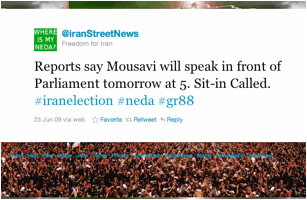
Fig. 1: One of the post-election tweets gives information about the Green Movement leader’s speech which implicitly invites people to demonstrate
Twitter’s story in Iran’s post-election period began with the assertions of the Twitter Revolution’s ‘godfather,’ Andrew Sullivan – a British blogger and commentator- and his excited expressions about the role of Twitter in the protests (Sullivan, 2009). Numerous pieces of evidence, including inspiring tweets from Tehran drove Sullivan to name the Iranian movement, the ‘Twitter Revolution’ (Fig. 2). Hillary Clinton’s remarks about Twitter followed and she directly defended a U.S. request for Twitter to postpone a planned maintenance shutdown so that Iranian access to Twitter would not be interrupted. According to her press interviews, it was clear for the United States that Twitter was a powerful means to change the collapsed situation in Iran (VOA, 2009). Such US support for Iranian people was surprising after the long history of isolation and economic sanctions against Iran.
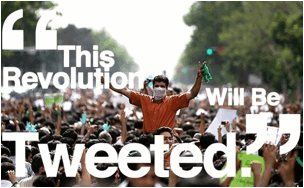
Fig. 2: ‘This revolution will be tweeted’ is Sullivan’s famous sentence about the Green Movement and was used on many occasions by artists and activists.
Sandor Vegh’s classification of online activism is helpful in explaining how social media operates in Iran’s Green Movement. He identifies the possible functions of online political activity in the following list (Gaffeny, 2010: 1):
- Awareness/ Advocacy: the generation of sympathetic information
- Mobilization: the planning and deliberation as a result of sympathetic information
- Action/ Reaction: the result of planning and deliberation
By insisting on a primary role for Twitter, both Clinton and Sullivan were dreaming that Iranians had arrived at Vegh’s third step of online activism where people are armed by their Twitter accounts and able to make plans and organize their demonstrations to effect significant change. They insisted that what we were witnessing in Iranian Twitter posts was a variety of true stories which could only be revealed for people all around the world through social media due to a lack of reliable independent news agencies in Iran. Even commentators called Twitter the ‘medium of the moment’ for Iran and explained it as free, highly mobile, very personal and very quick (Grossman, 2009: 1). They highlighted the effectiveness of Twitter by insisting on its mobility by updating tweets with a simple SMS.
Twitter took advantage of this hype and released a report (Fig. 3) about Iranian activities on Twitter.
Twitter’s value as a communication tool was highlighted when the U.S. State Department Asked Twitter to postpone scheduled maintenance so Iranians would have access to service at a time when thousands were taking to the streets to protest (Sysomos, 2009: 1).
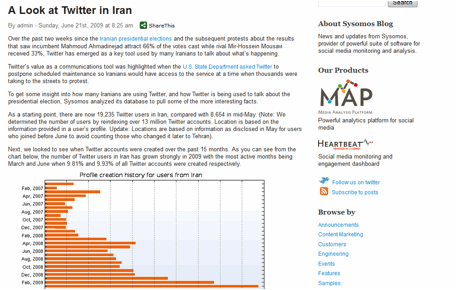
Fig. 3: Sysomos report on Iran’s Twitter users
This report continues to compare the differences about how users were engaged with Twitter before and after the presidential election. Sysomos focused on the location of users based on people’s profile information and new accounts that seemed to be created by Iranians during the crisis. Before the election in mid-May 2009, 8654 Iranian users were active on Twitter. A month later the population had more than doubled to 19235 users, some of whom were sharing information and organizing the revolution via Twitter.
Looking at IWS statistics however, these 19000 Twitter accounts represent only a small segment of Iranian online presence (Fig. 4). Iran had 36 million internet users representing a 47% penetration rate in the crisis period. Only 8500 of these were Twitter users before the election and whether they resided in Iran at the time is unclear. After the election, a considerable rise is Twitter use is documented, but still just 19000 Twitter users among 36 million Iranians online. Given that a significant proportion of Iranian online activity was limited to non-networked applications like using email and accessing government web portals for essential services, the effectiveness of 19000 Twitter users in the matter of organizing protests is called into doubt. Moreover, many expatriate Iranians around the world changed their Twitter ‘location’ to Tehran. This further complicates the accuracy of measuring the number of active Twitter users in Iran at the critical moments.

Fig. 4: IWS statistics about Iran’s Internet usage 2009-11
What the Western press and commentary overlook is that Twitter was unreliable at many crucial times when the government blocked Internet and SMS services (Fig. 5). When this happened, people on the streets lost their Twitter connections and the much-praised feature of mobility was useless.
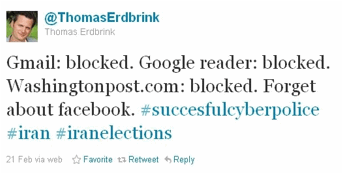
Fig. 5: Documenting Internet service failure during crucial days
The content of tweets is also important to our understanding of the role that Twitter had in organizing protest events. The most common way that people used Twitter was in sharing news of events that had already occurred. Circulating hyperlinks to news stories and eye-witness accounts was common. These were then retweeted. Twitter was less often used to give the time and location of a protest event. There was also a reliability issue with Twitter once it was known that government agents were also using Twitter. Paid by the government, undercover agents became active on Twitter to find protestors and to plant contradictory stories. As misinformation was circulated on Twitter it became hard to distinguish truth from lie.
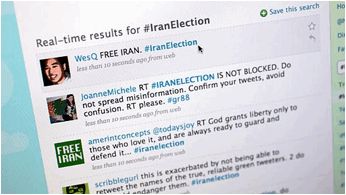
Fig. 6: Users challenge misinformation on Twitter
After a while the degree of distrust in the cyberspace soared dramatically. During this disappointing period, most of the online activity came from Iranians who were living outside of Iran. Distrust in cyberspace had a negative effect on online protests. Twitter’s local users started to hide their locations or change them to fake places to increase their security and to make quantitative analysis of people’s contributions impossible.
Green’s Virtual Presence and Trust
Although Twitter’s role was exaggerated, it is also true that the government did its best to reduce the significance of such online activities. A similar story could be told of other social media tools and online activities during the crisis. One explanation for the government’s response to this online activity can be found in the concept of social capital. People coming together online, developing networks and exchanging information increases their social capital by empowering them. Coleman explains that social capital ‘is not a single entity, but a variety of different entities having two characteristics in common: They all consist of some aspect of social structure, and they facilitate certain actions of individuals who are within the structure’ (Coleman, 1990: 303). Valenzuela draws our attention to civic participation, political engagement, life satisfaction, and social trust in the construction of social capital (Valenzuela, 2009: 876).
If we accept that social capital and human networks are interconnected, in the age of digital technologies, Facebook or Twitter are new means by which most individuals implicitly improve their social capital as they regularly use these services. In countries like Iran where people are suffering from the lack of several socio-political freedoms, the social capital provided by social network sites is even more important.
In the post-election crisis period while the government was trying to disperse people on the streets, protestors eagerly tried to find each other in different social network sites and used social media tools to form a virtual party of resistance. Green Movement communities and supporting groups were getting bigger and bigger. More Iranians entered Twitter and Facebook. Invitation messages for more demonstrations against the government were circulating by email, Facebook messages and Twitter tags. Differences were not important but people united against the government. Not since the Islamic Revolution in 1979 had Iranians experienced such solidarity.
Coleman’s criteria for social capital are met here: a new virtual social structure was forming and it would facilitate the primary activity of protesting against an unfair situation. Valenzuela’s elements of social capital are also present including: civic participation, political engagement, life satisfaction and social trust. Hope was high and belief was strong that people were going to change the outcome of the election and force the government to be just.
After a few days during which the government tried to calm the situation through fruitless negotiations with the movement’s leaders, they deployed another strategy for dealing with the unrest: a military response to suppress protest on the streets. They extended the domain of arrest and torture and broadcast on TV numerous forced confessions from ordinary people expressing their regret at being used by western governments to subvert the course of elections in Iran. Along with applying hard penalties for activists, the cyber police was established by intelligence services to identify cyber activists and ordinary people who were active in social media and personal weblogs against the government (Fig. 7). They started to arrest people randomly and accused them of cybercrimes. The courts interpreted the acts of some cyber-activists as fighting against country and god. This new approach by the government was temporarily successful; they could frighten people through extremely barbaric acts and as a result, for a short time protests were quelled.
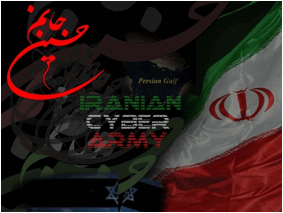
Fig. 7: One of the graphic works of the cyber police
A consequence of these actions was a loss of trust within the protesting population. As Valenzuela and some other scholars insist, one of the most important elements in formation and improvement of social capital is the level of trust in a society (Putnam, 1995; Valenzuela, 2009). People’s attitudes toward cyberspace changed and so did their actions. A common response was to change their name on Facebook; Irani or Green became very common surnames in that period (Fig. 8). Some people hid their friends list or changed their profile picture to something unrecognizable. Some users even deactivated their profiles. As the military forces became more successful at controlling the streets, the online presence of activists and protesters was reduced by mistrust. The entire movement, online and on the ground, was weakened.

Fig. 8: Faces and first names blurred, Irani becomes a common name on Facebook
Conclusion
Scheufele and Shah recognized that social capital has three domains: intrapersonal, interpersonal and behavioral (Valenzuela, 2009). In the Green Movement’s case, and during the crisis period, cyber-activism as the added value to people’s social capital achieved effects in first domain: intrapersonal. Expressing political opinions via social network sites and personal activities provided satisfaction for individuals. When it comes to trust between individuals, and individuals’ active participation in civic and political activities, that are orderly in the interpersonal and behavioral domains, however, the achievements were limited while expectations were high. Such an authoritarian government would not allow people to use their potential against the system.
In the Iranian context, with a lack of independent (traditional) media, of course, an important element of collective power was, and remains, social media. From a social capital perspective, the government’s invasion of cyberspace has destroyed trust within the protest community. Twitter’s story shows that while social media did serve informational functions during the crisis period, they have not been effective in mobilizing the masses to face military force on Tehran’s streets, so far.
Footnotes
1. Green Movement is a grassroots political movement named after 2009 controversial election for the Iranian presidency. It bears no affiliation with the environmental movement or other Green political parties worldwide.
References
Coleman, J. (1990). Foundations of Social Theory. Harvard University Press. Cambridge: Harvard University Press.
Gaffeny, D. (2010). #iranElection: quantifying online activism. WebSci10: Extending the Frontiers of Society On-Line. Raleigh: Web Science. Retrieved from http://journal.webscience.org/295/
Grossman, L. (2009). Iran Protests: Twitter, the Medium of the Movement. Time. Retrieved September 23, 2010, from http://www.time.com/time/world/article/0,8599,1905125,00.html
Presse, A. F. (2009). Hillary Clinton: Twitter Important for Iranian Free Speech. AlterNet. Youtube. Retrieved October 10, 2012, from http://www.alternet.org/rss/breaking_news/62367/hillary_clinton%3A_twitter_important_for_iranian_free_speech
Putnam, R. D. (1995). Bowling Alone: The Collapse and Revival of American Community (p. 67). New York: Simon & Schuster.
Sullivan, A. (2009). The Revolution Will Be Twittered. The Atlantic Monthly Group. Retrieved October 10, 2010, from http://www.theatlantic.com/daily-dish/archive/2009/06/the-revolution-will-be-twittered/200478/
Sysomos. (2009). A Look at Twitter in Iran. Toronto. Retrieved from http://blog.sysomos.com/2009/06/21/a-look-at-twitter-in-iran/
Valenzuela, S. (2009). Is There Social Capital in Social Network Sites? Journal of Computer-Mediated Communication, 14(4), 876. Retrieved from http://onlinelibrary.wiley.com/doi/10.1111/j.1083-6101.2009.01474.x/pdf
VOA. (2009). Obama Administration Denies Interfering in Iranian Affairs. Voice of America. Retrieved November 15, 2010, from http://www.voanews.com/content/a-13-2009-06-17-voa70-68788127/411194.html
About the author
Amin Ansari was born in 1983 in Iran. He holds a bachelor degree in Software Engineering and a Master of Dramatic Literature. After All, and according to his interest in multidisciplinary fields of study he became a PhD candidate in Screen and Media department at Flinders. Also, as a writer, he has been engaged with writing stories and plays during last twelve years. He has published four books in Iran and Germany including three story books and a book entitled “An Introduction to Narrative in New Media art”.